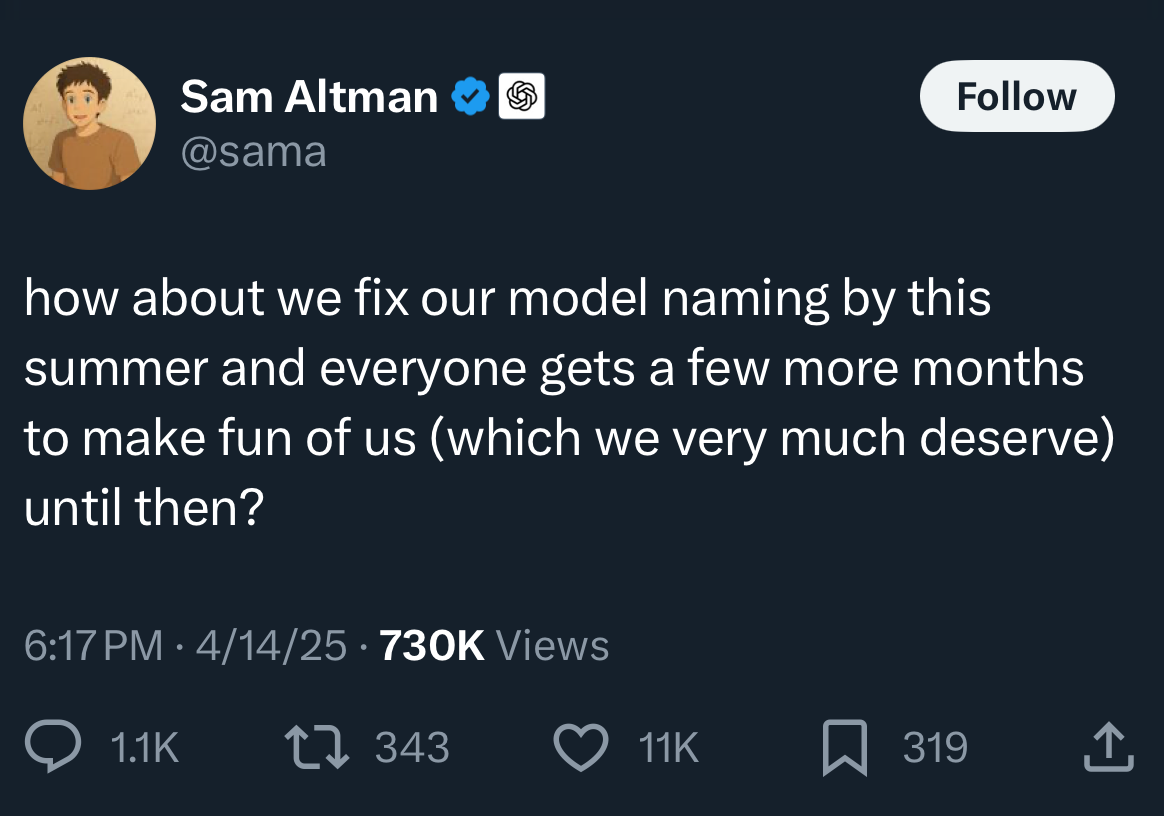AI-dentity Crisis
Imagine with me…
Intelligenix (a fictional company) has been preparing for its new AI product launch. Finally, the day comes, and it’s announced to a keynote room full of prospects, customers, and salespeople, "Introducing IntelliGen X5: The Adaptive Cognitive Decisioning Platform for the Enterprise!"
The announcement includes its ability to perform "multi-modal language processing" and "dynamic inference tuning." But no customer in the room seems to know what that means, and worse, neither do the sales teams. What does it do? And just how are they supposed to sell it?
(While I’ve changed the names and details to protect the innocent, unfortunately, it isn’t too far from reality.)
Artificial intelligence is evolving at a blistering pace, and companies are desperately trying to stake their claim and take advantage of it. According to McKinsey, 92% of companies plan to increase their AI investments over the next three years.
Yet, despite all this investment and adoption, only 1% of company executives describe their AI rollouts as “mature.” One telltale sign is that many AI solutions suffer from an identity crisis.
This shows up as:
Offerings that are undifferentiated from one another. Why would I buy into yours?
Product names that sound more like military hardware or scientific compounds than services designed for humans.
And robotic and technical interfaces require me to think and act more like a robot than a human.
To succeed, companies touting AI need to address the identity crisis. Here are three core issues and how the industry can improve.
Lack of differentiation
The market is in a rush to promote AI-powered anything, and we clearly haven’t decided how to talk about it yet. Just look at some of the headlines. You’d be hard-pressed to decipher between one company’s offerings from another
The World’s Leading AI Platform for Enterprise
The all-in-one platform for private and secure AI
This is enterprise AI
The Work AI platform connected to all your data
AI-powered automation for every decision
Your data. Your AI. Your future.
When everything is almost identical, consumers find it challenging to make informed choices. Without unique characteristics, outcomes, or values to highlight, even the most appropriate solutions will struggle to capture attention and revenue in a crowded marketplace.
(For a more lighthearted take on the lack of visual differentiation, consider, Why do AI company logos look like buttholes? While humorous, as they say, there’s a grain of truth in every joke.)
As AI grows more complex, clear positioning and messaging around what the tool does—and what it doesn’t—will be essential. It’s not enough to say you’re "the AI Platform for X.”
Until it becomes more widely adopted, the solution is not to draw more attention to it. Nobody wants to interact with AI more than the outcomes it provides. So, show up as a supportive assistant with the AI running in the background.
For example, John Deere’s See & Spray utilizes computer vision and machine learning to distinguish crops from weeds in real-time. This approach leads to significant cost savings for farmers, as they only spray weeds, and reduce herbicide use.
As AI becomes more mainstream, it’s been interesting to watch things shift from being “AI-powered” to "AI-assisted" or "human-in-the-loop." This clarifies technology’s role and reduces the false (and creepy) illusion of omniscience.
Cryptic naming conventions
All too often, product or model names appear as if the technology itself created them—robotic and cold. Whether the platforms themselves or the companies that adopt them, the names frequently sound complex or “techy,” focusing on what the product is rather than what it does or the outcomes it creates. (Feels like OpenAI is just catching wind of this.)
Furthermore, amending existing names with GPT/AI, adding random numbers and dashes, or forming them into acronyms doesn’t help. It makes them feel overly technical at best or unintelligible at worst.
ChatGPT: o3-mini, o3-mini-high, o1, 4.5
Meta: LLaMA (Large Language Model Meta AI)
EinsteinGPT
GPTGO.ai, H20.ai
Instead of cryptic acronyms or tech-heavy monikers, AI products should adopt more descriptive, clear, outcome-focused names. Instead of focusing on your AI-powered solution, tell the customer what it can do for them.
Within the naming issue are also companies who “relabel” their automation efforts as “AI,” leaving customers confused as to what the difference is. (Like when your friend Jimmy now insists on going by James—but they’re the same person.)
Good product branding isn’t just about names or logos—it’s about building a relationship with your customer. When companies obscure their product’s function with vague or overly technical names, they alienate users instead of building trust.
Seth Godin commented, “Marketing is no longer about the stuff you make but about the stories you tell.” AI clearly needs more story-driven marketing.
We can lean into the power of metaphor and narrative for inspiration to get there. I just finished the book User Friendly by Cliff Kuang and Robert Fabricant and was reminded of the hidden value of metaphors that have supported successful product design for years. Think of the desktop (and the metaphor of an actual desk), inbox (mailbox), and feed (constant stream of updates). AI products should use metaphors that ground their capabilities in familiar experiences and in the more prominent brand they serve.
Robotic and technical UX
Many of today’s AI tools boast sophisticated algorithms; however, few deliver on user experience. Overly technical or convoluted UX leads to confusion and frustration, particularly for users without technical expertise. Consequently, these products hinder productivity, leaving users overwhelmed or stumped by complexity.
Using Midjourney via a third party exemplified this for me, as Discord’s interface and interaction model were unfamiliar. Navigating Discord's chat-based design deterred me from further interactions. The lack of intuitive, or at least familiar, design elements led to misunderstanding, trial and error, and frustration. Rather than facilitating creativity, this turned what should have been an inspiring and innovative process into an unpleasant endeavor.
To address this, as a starter, businesses should prioritize people-centered design by conducting thorough research to understand user needs and preferences instead of blindly leveraging (or forcing) technology upon them.
The race to incorporate and benefit from AI is not just about having it or leveraging better models or more intelligent algorithms—it’s about continuing to build trust and connection in new ways of working and realizing new value. For your product or service to win, it must feel familiar and relatable, not robotic and obscure.
It’s time for AI products to more clearly communicate their unique value and resonate with the market.
It’s time for AI to lose the sterile acronyms and lab-grown names in favor of something more human.
It is time for the experience of using AI to feel less like programming and more like collaborating.
Because in the end, the AI products that win will be the ones that support our humanity, not try to overtake it.



